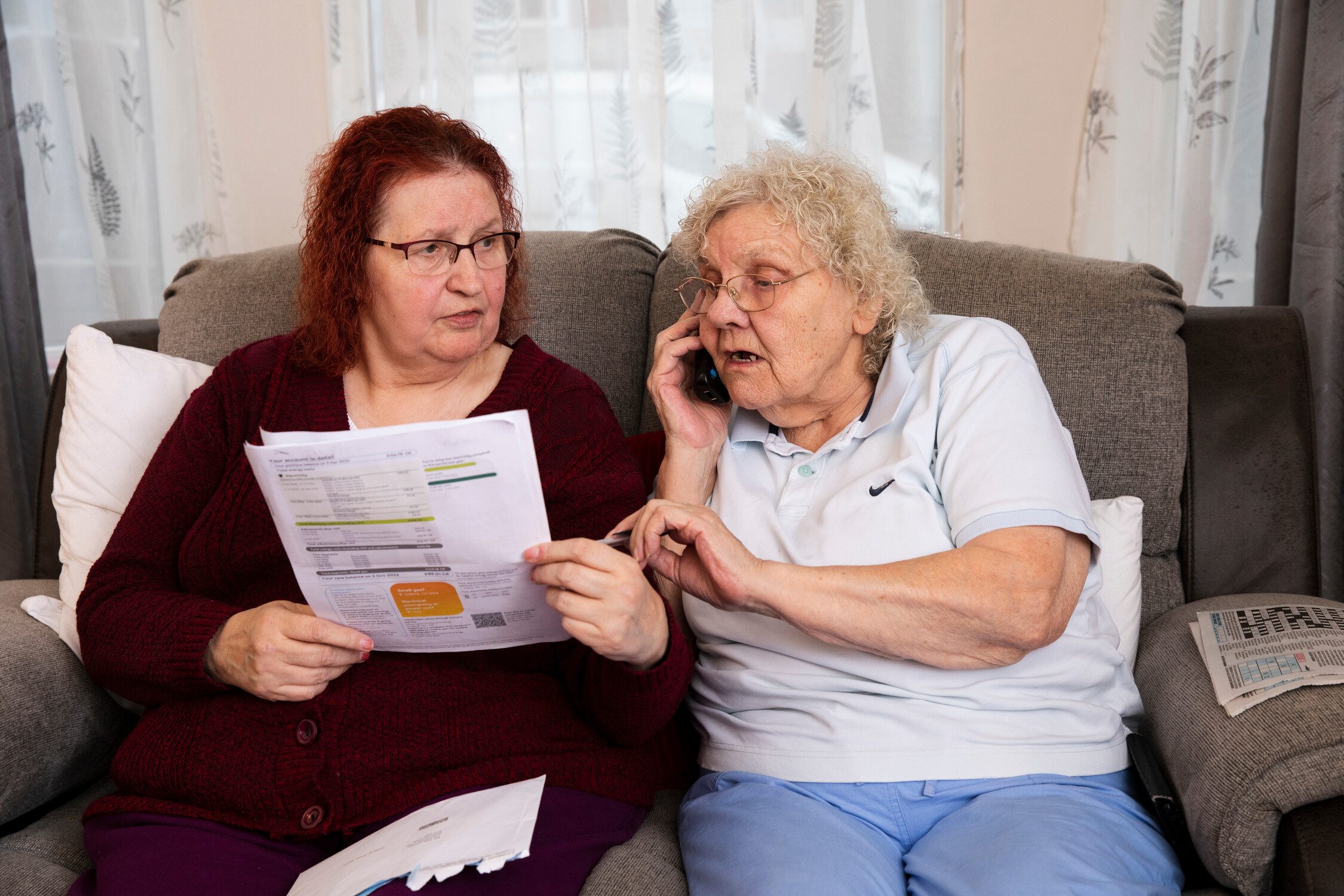Personal independence payment – changes and tips
Tags
Paying for care
Personal Independence Payment (commonly called PIP for short) is a benefit that helps with living costs if you have a long-term health condition or disability. There’s been a lot of talk about PIP recently in the news, but why? And does it mean it’ll be harder to claim? In this article we sort the facts from the fiction and share top tips for making a PIP claim in 2024.
What is PIP?
PIP is a benefit for people living with a long-term condition or disability, which makes it difficult to do everyday tasks, get out and about, or work and hold down a job. The condition can be a physical condition or a mental health condition.
It’s available to adults under state pension age (currently 66 years old for both men and women). It’s not a means-tested benefit, and can be claimed alongside other benefits. If you’re over state pension age, you can apply for Attendance Allowance instead.
PIP is split into 2 parts – ‘Daily living’ which you might get if you struggle with things like preparing food and getting washed and dressed, and ‘Mobility’, which may be awarded if you struggle to move around or leave your home.
You’ll complete an application form where you’ll have the opportunity to share how your condition affects you. This is usually followed by a telephone or in-person assessment to help work out if you’re eligible for PIP, and whether you need the standard rate, or the enhanced rate for each of these parts.
| lower weekly rate (standard) | Higher weekly rate (enhanced) |
Daily living part | £72.65 | £108.55 |
Mobility part | £28.70 | £75.75 |
Is PIP changing?
The previous Conservative Government had announced plans to reform PIP, and Keir Starmer’s Labour Government also mentioned PIP reforms in their manifesto, however they’re yet to release any further details of what these changes might be.
While we may have to wait and see what the future holds for PIP, there are some changes that have already taken place which may affect you.
Change 1 – PIP is not available in Scotland
Last year Scotland replaced PIP with a new Scottish benefit called Adult Disability Payment (ADP). This benefit is awarded and paid by Social Security Scotland, rather than The Department for Work and Pensions (DWP).
If you’re currently receiving PIP in Scotland, you should be automatically moved to ADP by 2025. And don’t worry, your benefit amount shouldn’t change.
If you’re starting a fresh claim, you’ll need to do this for ADP instead of PIP. The process is very similar to PIP and involves answering a lot of detailed questions online. Social Security Scotland may make a decision based on your answers alone, or may invite you to a face-to-face consultation with some additional questions.
Change 2 – Amended PIP Assessment rules
Some people who already claim PIP could be owed thousands of pounds. This is due to a court ruling which found the DWP was inaccurately scoring people for their ability to ‘engage with other people face to face’ – leading to many being awarded lower PIP payments than they should have had.
If you applied for PIP before 2020 but missed out on the Daily Living part or are receiving the lower rate , it’s worth contacting the DWP if the below applies to you.
- You have regular meetings with a mental health professional – without which you’d not be able to manage face-to-face encounters
- You rely on certain friends or family members to support you in social situations and help you manage face-to-face encounters

Tips for applying for PIP
1. Take your time
The PIP and ADP application form is long and detailed – the daily living section alone is around 50 questions, but you don’t have to complete the whole form in one go. Break it down into manageable sections, and reach out to Citizens Advice or find a local benefits advisor to help if you get stuck.
You’ll have about a month to complete and return your form (the deadline date should be at the top of the form). However if you’re finding the application process difficult you can contact the PIP enquiry line and ask for more time – they often give extensions up to 4 weeks.
2. Keep a PIP diary
It can be difficult to explain how your condition impacts everyday life, which is why some people find it helpful to keep a diary for a week or two. Simply record Which daily tasks you’re finding difficult and why, as you’re experience them. This will then give you something to refer to when filling in your form, and can also be used as evidence itself to accompany your claim.
It doesn’t matter if you’re already getting help with certain tasks, what matters is communicating what you can and can’t do with the DWP. You may want to pay particular attention to the 12 areas PIP is assessed on –
- preparing a cooked meal
- eating and drinking
- managing your treatments
- washing and bathing
- managing toilet needs or incontinence
- dressing and undressing
- communicating verbally
- reading and understanding written information
- mixing with others
- making decisions about money
- planning and following journeys
- mobility tasks moving around
3. Avoid simple answers
‘No’ or ‘Yes’ answers might be tempting when you’re trying to get through a long form, but this leaves too much room for interpretation. Remember you need to clearly communicate exactly which parts of daily life are difficult and why. be factual and give definite answers. For example, if you’re in pain a few days a week, give a specific number of days.
4. Provide as much supporting evidence as you can
You can send as much supporting evidence as you can with your claim form. This could be a report, scan or letter from a health professional treating you, information from your GP, or statements from a carer or friend. Ask for them to send the evidence to you, rather than directly to the DWP so that you can check you’re happy with it.
You can also include letters you’ve already received about medical treatment, referrals and diagnosis. Whatever you choose to include, make sure you send photocopies rather than originals.

Tips for an in-person PIP assessment
1. Request adjustments if you need them
Once you’ve received your PIP appointment letter, get in touch with the assessment provider (they should be named on the letter) to ask for any adjustments or services that would make you more comfortable. These may include things like –
- An interpreter or signer to be present, or use of a video relay service
- An assessor who’s the same gender as you
- A home visit if you struggle with mobility and the assessment is more than 90 minutes away
- Wheelchair access and lifts
- A larger assessment room if you get anxious in small spaces
2. What you do is just as important as what you say
Your assessor will be paying attention to how you behave and your abilities, as well as your answers to their questions.
At a PIP assessment centre they may start observing you via cameras from the moment you arrive. This is to see how you are naturally, away from the answers you’ve prepared. Your assessor may also ask you to do and read things during your assessment.
3. Ask for the assessment to be recorded
This is important in case your claim is rejected as it gives you something to refer back to and cite if you wish to contest the initial decision.
Can I use PIP to pay for care?
Yes, you absolutely can if you wish. If you’re receiving the higher rate for both Daily Living and Mobility, you’ll get nearly £800 every 4 weeks to put towards your care costs.
However long-term disabilities and medical conditions can be really expensive. For example, you may need to pay for a lot of taxis and deliveries if you can’t drive or walk, or install expensive equipment in your home. If your disability means you can only work a few hours a week, or stops you working completely, PIP can be a lifeline for getting bills paid on time.
Therefore if you think you need care, it’s worth reaching out to your local social services department and asking for a care needs assessment. If you’re found eligible for care and have less than £23,500 in income, savings and assets, they’ll help you pay for your care.
It’s also worth remembering that the application and assessment process for any form of funding or benefit can take a while, as the demand for them is usually really high. PIP can take between three and eight months from start to finish, and while it may be backdated, it may not be the right solution if you’re facing immediate extra costs that you can’t manage.
Sources –
https://www.mygov.scot/personal-independence-payment-is-moving
https://www.disabilityrightsuk.org/resources/adult-disability-payment-scotland
https://www.gov.uk/pip/how-to-claim
https://lottie.org/fees-funding/pip-assessment-rule-change/
Learn more about paying for care
We know your money matters. Take a look at more Elder guides on care costs and funding below.



